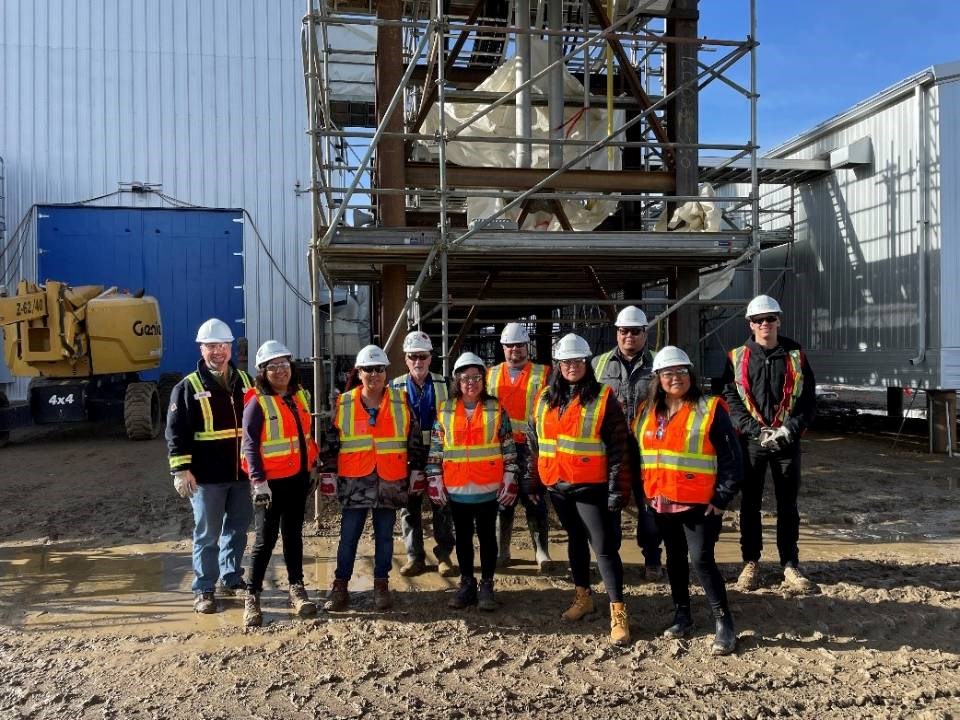Jason Thompson figures his business was about three months away from going under when the pandemic hit.
Two years earlier, he’d launched Superior Strategies, a safety, industrial and cleaning products supply company, after heeding cross-Canada calls for more Indigenous businesses to engage in the procurement process.
Yet despite being added to vendor lists, the opportunities to bid on contracts were few and far between.
Then COVID-19 arrived and suddenly businesses were scrambling to find enough supplies and apparel to keep their employees safe.
“I was very fortunate that we were able to access masks, and hand sanitizer, and wipes,” said Thompson, a member of the Red Rock Indian Band in northwestern Ontario. “That changed the path of our business, and it allowed us to grow and demonstrate what we’ve been able to do.”
Today, Thompson’s thriving business has expanded to include training, project management, consulting, and human resources services.
But he remains disappointed at the slow pace of change demonstrated by both private and governmental non-Indigenous organizations in building relationships with Indigenous companies and communities.
“If you say you’re going to do something, do it; what gets measured, gets done,” he said. “Put some targets out there and hold people accountable.”
Thompson was speaking as a panellist during a lunchtime webinar hosted by the Sault Ste. Marie Chamber of Commerce on Oct. 26.
Titled Resource Champions: Creating Indigenous Prosperity, the panel examined the challenges and opportunities faced by Indigenous businesses and First Nations in trying to gain a foothold in resource development projects.
Even with economic reconciliation being one of the 94 calls to action under the 2015 Truth and Reconciliation Commission Report, Indigenous communities can still feel like they have to fight to take their rightful place amongst other partners, noted Karen Ogen-Toews, CEO of the British Columbia-based First Nations LNG Alliance.
Ogen-Toews was involved during impact benefit negotiations between area First Nations and TC Energy, which is currently building the northern B.C. Coastal GasLink natural gas pipeline.
Ultimately, Indigenous communities there secured work under three streams of procurement: camps and catering, security, and clearing, she noted.
But once the company had met its procurement obligations under the negotiated threshold, it felt it could “walk away,” said Ogen-Toews.
Her home community of Wet’suwet’en First Nation, where she served as chief for six years, decided it wanted more work. It negotiated additional contracts for not just their community but for neighbouring First Nations as well.
“We would work with those nations that were considered having overlaps in our territories, and we would partner with them and say, ‘Look: we’re working together. We want this opportunity provided to us,’” she said.
“The way we viewed it is if you’re going through our backyard, we want a say, we want direct contracts — and why not? I think that was one of the ways we had to continuously persevere with the company to ensure that Indigenous people along the pipeline were taken care of.”
According to the Ontario First Nations Economic Developers Association (OFNEDA), private industry is actually leading the way with Indigenous procurement, while governments are lagging behind.
Rob Furlonger, OFNEDA’s executive director, said he’s seeing more corporations establishing Indigenous relations departments, often with a focus on procurement.
More and more, companies are realizing the benefits of including Indigenous people and taking seriously the responsibilities they have to the communities they’re working in, whether they’re Indigenous, municipal, or regional in nature.
“Strong local economies make for a strong Canada, and Indigenous people have just as much to offer, as far as skills and knowledge, as any other community does,” Furlonger said.
“So it’s in the best interest of large corporations to support that and strengthen the local economies so that the total economy of Canada is much stronger as well.”
For organizations still unsure of how to start this work, the panellists agreed that it all begins with building relationships and establishing trust between the organization and the First Nation.
Ogen-Toews said organizations need to have a “genuine understanding” of the past, including becoming educated on the work of the Truth and Reconciliation Commission of Canada, the United Nations Declaration on the Rights of Indigenous Peoples, and the awareness campaign around Missing and Murdered Indigenous Women and Girls.
“Those are huge issues that each First Nation across Canada deals with on a daily basis,” she said.
Reducing unnecessary barriers and providing mentorship are also valuable to Indigenous business owners and communities who may not yet have the skills and experience to fully engage in development projects, the panellists said.
And organizations have to broaden their perspective as to how Indigenous people can contribute, Thompson said.
After the spring completion of the East-West Tie Transmission Line in northwestern Ontario, Thompson recognized that Indigenous workers from the project had many transferable skills that were also in demand at nearby mine development sites.
Simply cutting a cheque to a community won’t do anything to build capacity, he said. He’d rather gain allies who are eager to collaborate on helping Indigenous people grow.
“A partnership is work, and a partnership is growing together, learning together,” he said.
“Sure, we’re going to make mistakes, but that’s a big part of it.”




